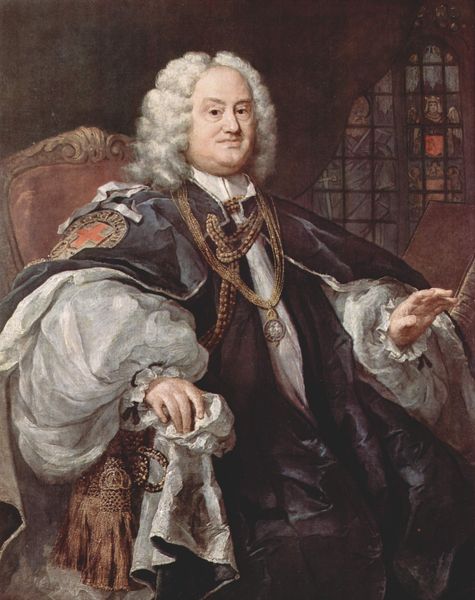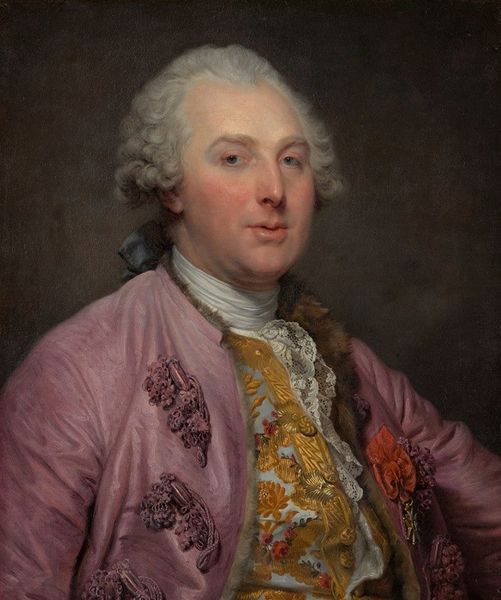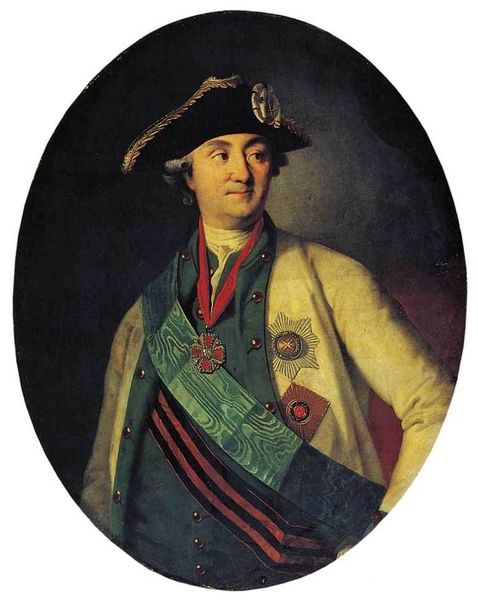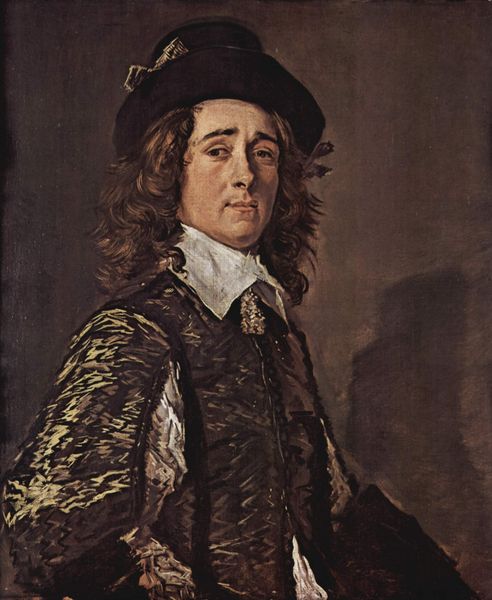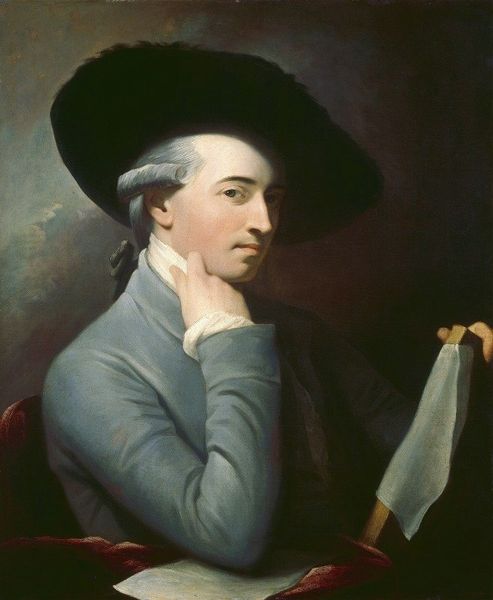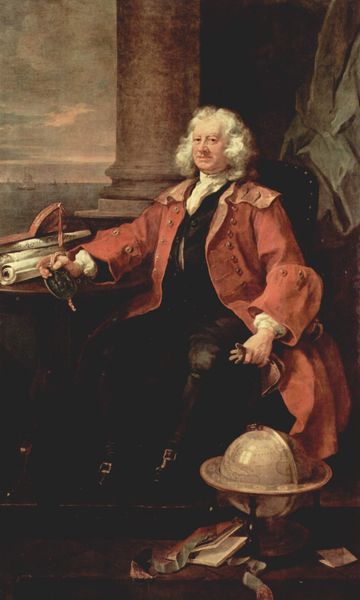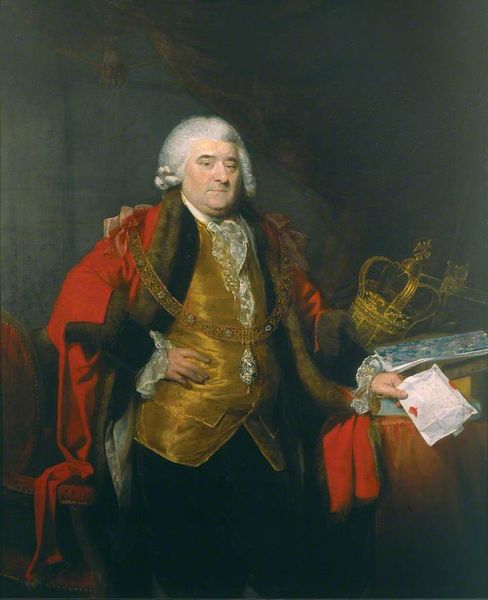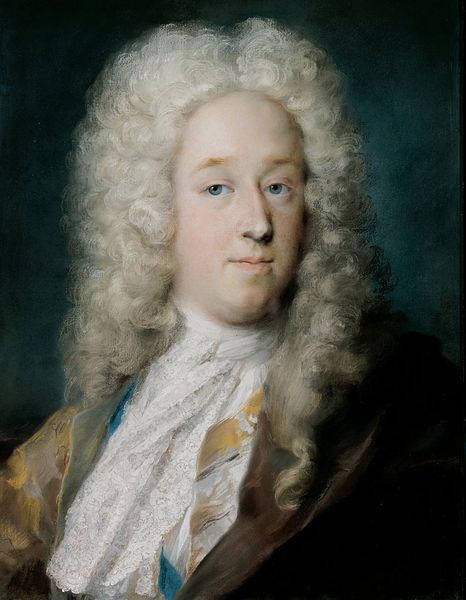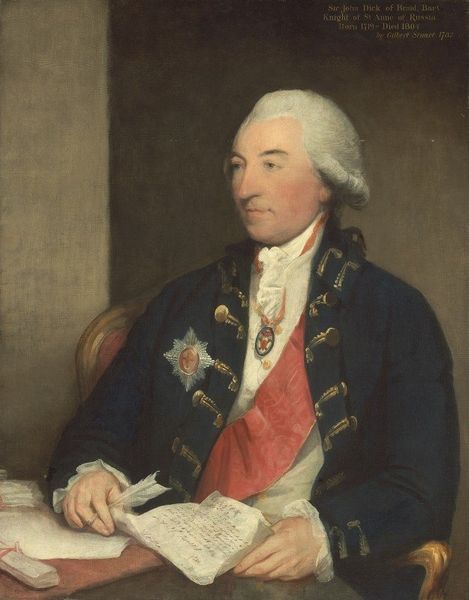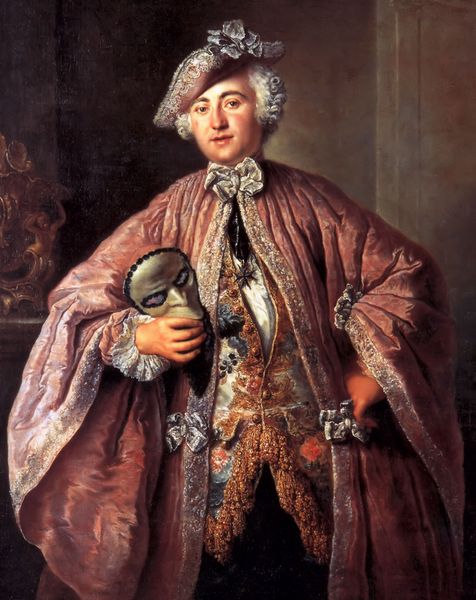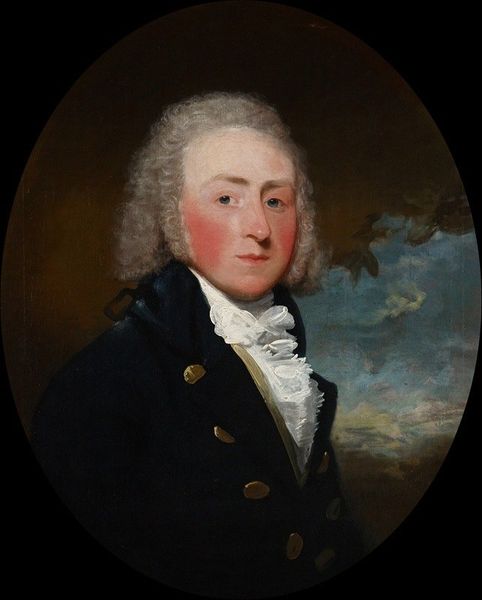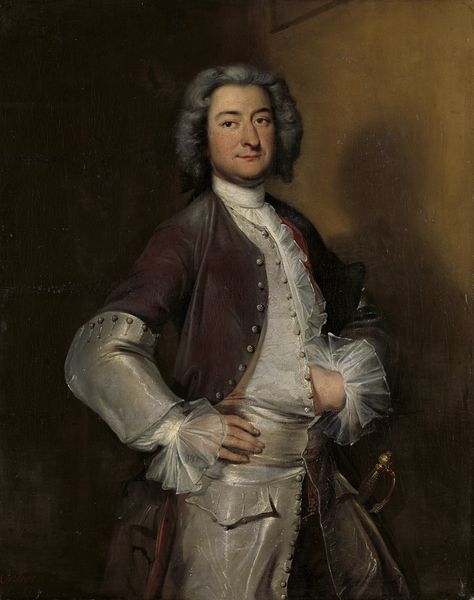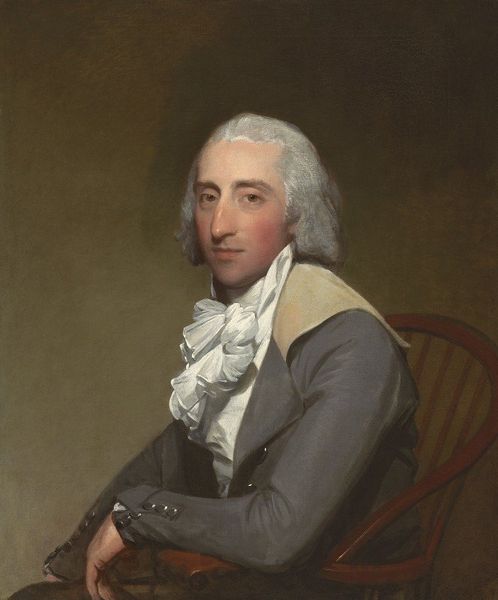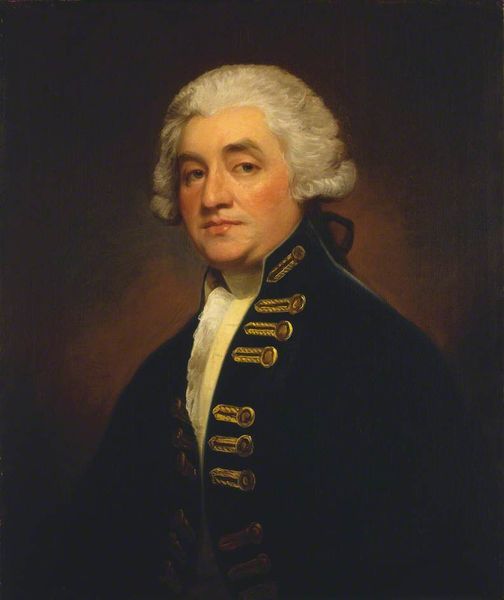
Copyright: Public Domain: Artvee
Editor: Here we have John Hoppner’s “Portrait of Dr. Edmund Ayrton,” painted sometime in the late 1700s to early 1800s. It's quite striking, but I'm unsure how to interpret the man’s rather self-assured gaze and flamboyant attire. What do you see in this portrait? Curator: Beyond a mere likeness, Hoppner provides us with a layered understanding of status and intellect. Consider the robes: red traditionally symbolized passion and importance; paired with the white, suggesting purity of thought. Notice the textures? Hoppner isn’t simply depicting clothing; he is constructing a visual language of achievement and social standing. What feelings are conjured when you consider these clues together? Editor: I suppose it evokes a sense of established authority. It's interesting how clothing functions as a symbolic indicator. What about the man's face? Curator: His gaze directs, doesn’t it? Steady, unflinching. He is aware of his own position and its accompanying responsibilities. Notice the subtle use of light, how it falls strategically to illuminate certain features. This is no accident, but a carefully calculated choice to convey specific characteristics. It speaks to how powerful images shaped the collective cultural memory during that period. Does it change how you see the portrait, knowing these contextual layers? Editor: Definitely! It becomes much more than just a picture of a man. It's like a coded message about who he was in society and what he represented. Thanks for sharing that, it’s incredibly insightful. Curator: Indeed! It highlights how even seemingly straightforward images hold profound cultural significance. Reflecting on this, perhaps the ‘simple portrait’ isn't so simple after all.
Comments
No comments
Be the first to comment and join the conversation on the ultimate creative platform.
